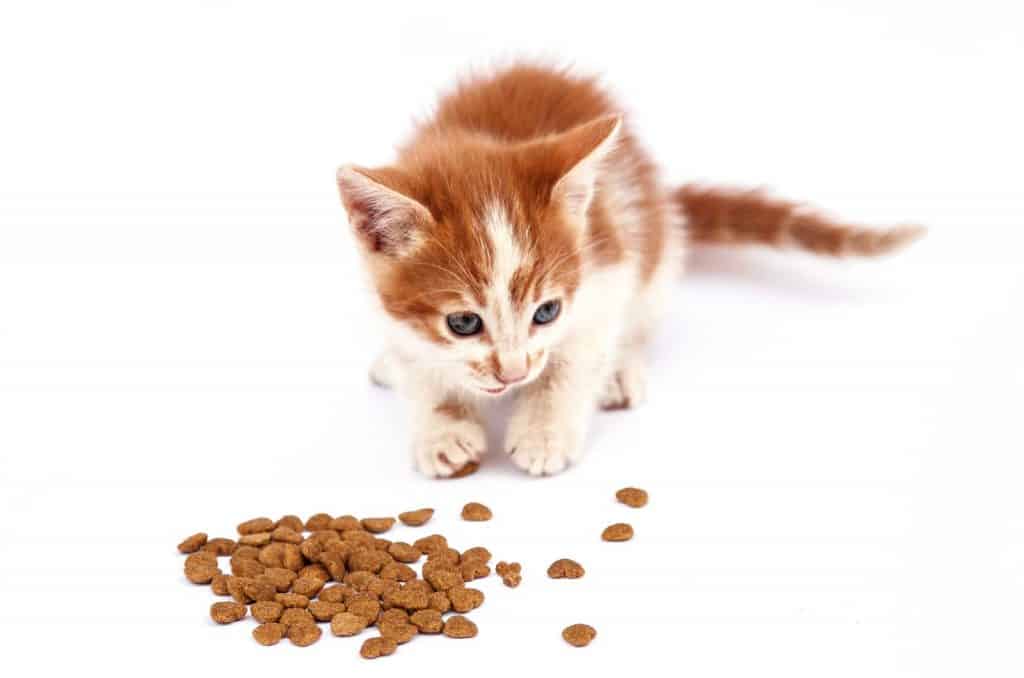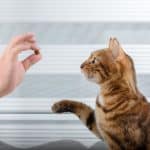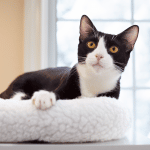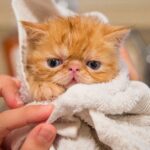Most kittens are adopted between the ages of 6 and 8. They’ve usually already weaned themselves from their mothers and are eating solid food. It is critical to take care of kitten feeding and provide kittens with a nutritionally balanced diet rich in high-quality vitamins, minerals, and nutrients.
Orphan kitten feeding
If you’ve rescued a little kitten without a mother, you should contact your veterinarian right away. You’ll need instructions on how to bottle-feed a newly born kitten, as well as special kitten formula. Furthermore, because very young kittens can’t urinate or defecate without their mother’s assistance, you’ll have to assist him. You can try substituting a wet cotton ball for his mother’s tongue (don’t worry— it’s not as tough as it sounds!).
Can we give kittens human food?
Despite the lovely photographs of kittens drinking milk from a saucer, kittens should only consume milk from their mothers. According to Drew Weigner, DVM, board-certified feline specialist, certain kittens (and adult cats) are lactose intolerant and get unwell when fed cow’s milk and other dairy products. It’s also critical to establish good kitten feeding habits early on and ensure that your kitty only eats what she needs.
Though most other ‘human’ food is safe for kittens, they will quickly learn to prefer it to their usual food. You’ll never be able to dine alone again! In some cases, human food can upset your kitten’s tummy, resulting in diarrhea.
What to include in kitten feeding
The food needs of your kitten will differ from those of an adult cat. A kitten’s meal should normally include the following ingredients to help them grow healthy and strong:
- Protein levels that are higher
- More calorieser per cup
- Certain minerals in higher concentrations (like calcium)
Young cats have growth requirements, which include an increased proportion of animal-based protein and higher calcium and phosphorus, according to Margie Scherk, DVM, DABVP of the Cats Only Veterinary Clinic in Ottawa, ON, Canada.
Your new kitten will most likely have a lot of energy and indulge in rough play, therefore their food should help them burn calories while exercising and expend energy for growth.
Wet vs. Dry food when feeding kittens
In kitten formulations, both wet and dry cat food are routinely offered, and each has its own advantages and disadvantages. Consult your veterinarian for advice on which choice is best for your kitten’s needs. Here are some advantages and disadvantages of each:
- Because wet cat food has more moisture, it can help keep kittens hydrated, clean out the urinary tract, and maintain kidneys healthy. Wet food, on the other hand, sticks to the teeth more, which can lead to dental disease and unpleasant cavity problems in cats.
- Dry cat food is easier to feed in multi-cat households and can aid in tartar removal. However, some cats can overeat dry food and gain too much weight, which can lead to arthritis, heart disease, blood pressure issues, respiratory issues, and diabetes mellitus, to mention a few.
What to look for in a high-quality kitten food
It may take some time and effort to figure out which food is best for your cat, but your efforts will pay off in the form of a healthy, happy, and gorgeous kitten. The easiest method to identify the healthiest kitten food is to compare foods and select a few options. Then, consult with your veterinarian to determine which is best for your kitten. Consider the source of protein in the food and choose a diet that is low in filler foods.

How much should a kitten be fed?
Kittens develop quickly at this age and consume a lot of food in comparison to adult cats. We want to give their bodies everything they need to grow, but we also want them to adopt long-term healthy eating habits.
Kitten feeding recommendations differ depending on the kitty. Most of the time, though, following the feeding instructions on the bag or can of food is a fine place to start, and you may tweak it as needed for your kitten. Based on your kitten’s current weight, your veterinarian can utilize metabolic calculations to calculate the quantity of calories required per day.
We want kittens to be hungry when they arrive for their meal, but not so hungry that they eat the entire food in a matter of seconds. Young kittens typically eat at most up to half a cup of food at a time.
If your kitten is underweight, the daily calorie requirement may need to be increased. You may need to reduce back if your kitten is gaining too much weight too rapidly. To determine your kitten’s weight, your veterinarian will use a tool called a body condition score.
Kitten feeding techniques
Kittens can be fed in two different ways. Each method has advantages and disadvantages, so weigh the pros and downsides and consult your veterinarian regarding free-feeding versus portioned meal feeding.
Method of free-feeding
Dry food is commonly used while free-feeding kittens, and a bowl is kept out all the time so the food is always available. This is useful for pet owners, especially those with busy schedules.
This kind of feeding has the advantage of allowing your kitten to eat when they want and, ideally, self-regulate how much they require.
One downside is that some kittens will overeat and gain weight as a result of this. Another downside is that in a household with numerous cats, the older cats may obtain access to and devour the kitten food.
This isn’t necessarily good for the elder cat’s requirements, and more dominant cats may be able to restrict the kitten’s access to the food bowl. It’s possible that the kitten isn’t getting enough food in these situations. When cats share a free-feeding bowl, it can be difficult to keep track of their unique eating patterns.
One solution is to use a microchip-activated feeder that only opens when your kitten’s microchip is scanned. Simply ensure that no other cat is protecting the feeder and preventing the kitten from eating.
Method of meal feeding
The second approach for kitten feeding is to feed them meals. This is especially useful for wet food that cannot be left out all day. In a multi-cat household, feeding specific portions at specific times allows you to keep track of how much and what kind of food each cat is eating.
Meal-feeding takes more time and requires a more consistent schedule for pet caregivers. With this type of feeding, you must ensure that you can feed your kitten frequently enough. Some cat food dishes have timers that automatically release a calculated amount of dry food at predetermined intervals.
Kittens can also learn to labor for a portion of their daily meal by using their instinctive hunting behavior. This aids in the mental and physical well-being of your kitten.
There are a variety of interactive bowls, balls that slowly disseminate dry food, and other options to keep your kitten interested so that his or her meal does not disappear in a matter of seconds.
How often should kittens be feed?
If you are not kitten feeding freely, younger kittens (6-16 weeks) will require many meals per day.
We want to maintain their bodies supplied with energy as they grow and expend calories. Feed every 6 to 8 hours.
Your veterinarian will calculate the total daily calorie requirement for your kitten, which you can divide by the number of meals each day. By the time kittens are 4-5 months old, they can usually be switched to two meals per day, keeping eating the total quantity of daily calories, but in smaller, more frequent portions.
Reasons why your kitten isn’t eating
Call your veterinarian to schedule another checkup if your new kitten isn’t eating properly or has diarrhea.
Intestinal parasites can sometimes cause gastrointestinal problems in kittens. It’s not uncommon for kittens to arrive home with parasites. They can pick up parasites from the mother cat’s milk as well as the placenta before birth.
Because some of these parasites can be transmitted to humans, proper hygiene and preventive treatment are essential.
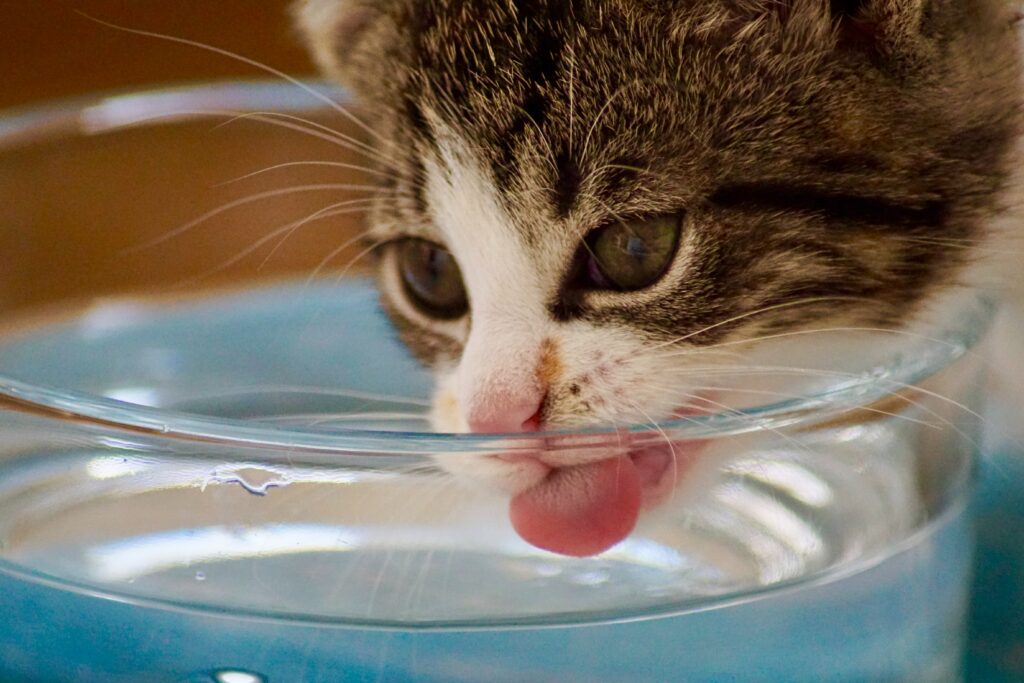
Other suggestions for kitten feeding
- Look for a food made especially for kittens, with a protein source like chicken included among the first four ingredients.
- Any changes in eating habits should be reported to your veterinarian, since they could indicate a medical condition. If your kitten loses weight instead of gaining it, contact your doctor right away.
- Make sure your kitten has access to fresh, clean water at all times.
- To ensure your kitten has enough nutrition and moisture, mix dry food with canned food.
- Never feed cow’s milk or other human foods to your cat.
- Food should never be placed too close to your kitten’s litter box.
- After your cat has been spayed or neutered, which should be about six to eight months of age, begin the transition to adult cat food.
- If you start your kitten feeding schedule too close to when you wake up, he’ll start sneaking up on you and moving your wake-up time earlier and earlier.
- To prevent your kitten from getting into your garbage can for midnight nibbles, make sure it has a tight lid or is within a cupboard.
- Include plenty of playfulness and attention, which are just as important to a kitten’s health and happiness as proper nutrition.
Read more about proper kitten care 101!

